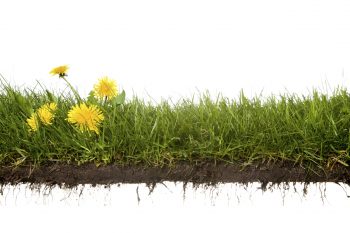 Not all lawns are created equal. Depending on the roots and growth patterns, some grasses are more prone to weeds than others. If you’ve got zoysia grass, you’re in luck, because it’s known to be pleasantly weed resistant.
Not all lawns are created equal. Depending on the roots and growth patterns, some grasses are more prone to weeds than others. If you’ve got zoysia grass, you’re in luck, because it’s known to be pleasantly weed resistant.
This is due to its thick thatch and dense root system, which make it difficult for weeds to establish themselves. Thus, the best way to prevent weeds in zoysia grass is simply to keep it healthy.
Let’s take a look at a few ways to ensure your yard’s health, as well as some solutions for when weeds do pop up.
Contact the Sod Gods to get a free quote for weed control services in Dallas, TX.
Keeping Your Zoysia Grass Healthy
- Make sure you don’t mow too closely. The dense thatch just above the topsoil is protecting your zoysia grass from invasive weeds, so you want to be sure not to compromise that. Mowing the blades too short can thin out the thatch, leaving your lawn vulnerable.
- Keep an eye on shaded areas. Zoysia is both sun and shade tolerant, but grass that’s not getting enough sunlight can begin to thin out. Once again, this provides an opportunity for intruders to settle in. If you notice thin patches in your shaded areas, consider overseeding to replenish it.
- Use fertilizer properly. Too much can burn your grass, yet too little can weaken it. Once again, the idea is to keep your ground cover dense enough to discourage weeds from taking root in the first place. Keeping a regular fertilizing schedule 4-8 times per year will help you keep the weeds at bay.
Killing Weeds that Have Already Arrived
- Identify what type of weeds you have. Doing so will not only inform you on what type of weed killer to use, it can also clue you in on the overall health of your yard. For instance, most north Texas grasses thrive on nitrogen-rich fertilizers.
If you discover a patch of clovers, that’s an indicator that you may not have fertilized adequately. Clovers prefer soil with less nitrogen. Solving the problem can be as simple as adding an extra fertilizer application to boost your zoysia grass’s health and crowd out the clovers.
When it comes to unwanted sedge cropping up, what you may be dealing with is an overwatered lawn. Be on the lookout for areas that aren’t draining properly after you’ve watered, and take appropriate measures to even out the terrain. There are no herbicides specified for sedge, so the best way to combat it is to mow frequently in order to chop off the seed heads.
As for more common broadleaf weeds, there are several weed killers you can use effectively, which brings us to the next topic:
- Identify the appropriate fertilizer. Knowing what kind of weeds you’re dealing with will influence whether you want a selective or non-selective herbicide. Keep in mind that non-selective herbicides will work on all plants, so they should only be used as a spot-treatment. Selective herbicides are safe to use more broadly, for weeds that are a bit trickier to spot-treat, such as dandelions.
Annual weeds such as chickweed, nettle, and spurge need to be treated with a pre-emergent herbicide that will stop the yearly cycle. Pre-emergents create a barrier within the soil that prevents the weeds from sprouting. Post-emergent herbicides are a good spot-treatment for weeds that have already established themselves in your lawn.
- Hand-pulling weeds is very effective. This may be the most time-consuming way to get rid of weeds, but it’s also fairly foolproof with no need to utilize chemicals. Make sure you’re using a garden tool to dig up the entire root system, so the plant cannot return.
If you’re only dealing with a small handful of dandelions, sometimes just “beheading” them can stop further propagation. This won’t kill the plants themselves, but it will prevent them from spreading seeds.
- Bag up your grass clippings. Normally, we encourage you to leave clippings behind, as a way to redistribute vital nutrients to your lawn. But if you’re battling an invasion of weeds, you want to get rid of any clippings that may contain seeds.
Conclusion
Keeping your zoysia grass hearty and thick is the most important step towards weed prevention. Be sure your lawn care routine is sufficient for this specific type of turf. If you’ve already got a weed problem, find out exactly what you’re dealing with, so you can make an educated decision about how to get rid of them.
